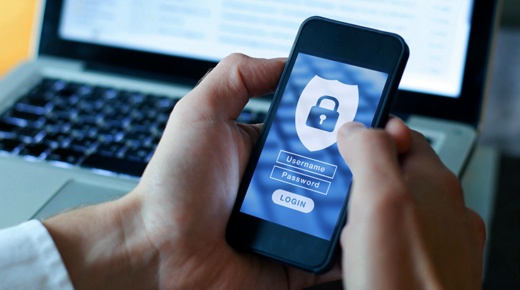
Payments in the Metaverse Part 2: How Purchases Occur in a Borderless Digital Ecosystem
The announcement of the metaverse has set the world’s imagination on fire, and for good reason. It’s poised to completely revolutionize how we interact with the internet, if not completely change life as we know it. We’ll explore the digital spaces of the metaverse through our virtual avatars. These avatars will be fully customizable, as will the digital spaces we’ll be able to experience and/or purchase in the metaverse.
But what kinds of virtual goods will we be able to purchase, and how will we purchase them within the metaverse? All of this is still being figured out, but there are some pretty informed ideas out there for how this virtual economy will work, and how and what we’ll use to make payments in web 3.0.
What Will Commerce Look Like in the Metaverse
According to Bloomberg Intelligence, the global metaverse revenue could approach $800 billion. So, needless to say, there are going to be big opportunities in the metaverse for those keen to leverage this new digital frontier. But this won’t be the B2B or B2C model we’re all used to working within. This will be a direct-to-avatar (D2A) model. Ecommerce will evolve into dcommerce (digital commerce).
The D2A model will open up new sources of global revenue for retailers, while also allowing them to side-step the supply chain, as most goods will primarily exist in the virtual world. This will also significantly cut down on overhead, time, resources, and labor.
Why You’ll Need to Pay in the Metaverse
There are almost limitless possibilities for what can be created and bought in the virtual world that is the metaverse. You’ll be able to buy skins, hairstyles, clothes, accessories and more for your avatar, as well as virtual land and property that you’ll be able to fill with virtual goods. Consumers will be buying these goods to enrich their virtual existence, much like they do in the real world.
But there are opportunities in the real world for consumers and businesses alike. The metaverse will obviously reach out into the real world and vice versa. Just as you can scroll a retailers website to look at and purchase their products now, in the metaverse you’ll be able to do this in a more immersive virtual 3D environment where if you see something you like you can have it in real time with a frictionless payment experience. There will even be an opportunity to buy products that have both metaverse and real-world counterparts, enabling users to wear the same styles as their avatar.
There are a few things that need to be addressed. When you buy a virtual coat for your avatar, will you technically own the coat? Or will you just be buying a license for the coat? Currently, when we buy digital goods, be it movies, music, or digital currency or items in video games, we don’t technically own those digital goods. We own a license to use them. We’re essentially renting them indefinitely. If, for instance, you purchase a movie on Amazon Prime, and Amazon loses the rights to host that movie on their platform, you lose access to the movie as well.
For purchases like movies which are only a few dollars this is a minor inconvenience. But in the metaverse, where bigger purchases like virtual property could be in the thousands, this is a problem.
But really, it’s just a logistical roadblock. One that will surely be figured out as the metaverse begins to take shape and slowly becomes a part of our lives. So, how will you pay for the virtual goods and services within the metaverse?
How You’ll Pay in the Metaverse
When it comes to purchasing goods or services within virtual worlds like Roblox or Alipay, payment is made by purchasing in-app currency—like Robux—which can then be exchanged for in-app items. Or by connecting your digital wallet to your bank account, which you can then use to easily make purchases in-app, in-store, or online. In the metaverse there will need to be virtual systems and applications for how we process our transactions. And since payment within the metaverse will include both digital currency and legal tender, this is where blockchain, cryptocurrency, and digital wallets come in.
Blockchain technology can securely facilitate peer to peer payments (P2P) within various digital payment mediums. The technology offers instant payment confirmation but it also offers a high level of security for transactions, and can be easily adopted and scaled by the mainstream. The instantaneous element of blockchain means immediate processing and settlement of all digital assets purchased in the metaverse. That means digital assets like NFTs, cryptocurrency, and any other future digital assets that play a part in the metaverse will be able to be marketed, traded, bought and sold in the metaverse. The transactions would potentially be tied to an individual’s blockchain-based payment wallet, giving a secure and instant way of accepting payments. However, challenges with blockchain’s technology could prevent this.
Along with blockchain and crypto, we can assume digital wallets will play a part in payments within the metaverse. While crypto’s popularity has grown significantly within the past few years, it has yet to be adopted by the mainstream. For those not comfortable dipping their toes into crypto payments in the metaverse, digital wallets will be a payment alternative that will allow users to pay for digital goods securely. While this will be an alternative to paying with cryptocurrency which uses blockchain technology in the metaverse, a crypto wallet may still be required to save digital assets purchased in the metaverse, as well as to transport them between different metaverses (think of each metaverse as a google, safari, firefox etc).
The Metaverse Conversation Continues
The metaverse and payments within it are still being iterated on and developed. So it will be a few years before we know how those systems will work. Pockyt is uniquely positioned to be a bridge between the brick-and-mortar world and the virtual world, especially as we continue to adapt our capabilities and solutions to suit whichever reality you choose to make transactions in. But that means we need to continue paying attention to the emerging (and trendy) applications coming out of Silicon Valley, fintech, and the payments industry—especially those enabling global payment opportunities—we can start to get a sense of what web 3.0 will look like, and how it will change commerce as we currently know it.
The metaverse has the potential to change our entire way of life in the same way the widespread adoption of the internet did back in the early 90s. Our digital lives, cultivated on social platforms and web forums, will become an even more important part of our real lives, allowing us to connect with each other through new digital experiences.
If the metaverse and dcommerce intrigue you as much as they intrigue us, we’d love to talk with you about it at this year’s ShopTalk, where we’ll have a booth. Come learn about our thoughts on payments within the metaverse as well as how our technology allows businesses like yours to accept digital wallets from around the world. Not going to be at ShopTalk this year? Contact our team today and set up a virtual chat!


